Don't Void Your Warranty: Essential Maintenance Requirements for Mazda Owners
Congratulations on owning a Mazda! You've chosen a vehicle renowned for its 'Zoom-Zoom' spirit, engaging driving dynamics, and stunning Kodo design. But beyond the joy of the open road, there's a practical side to ownership: protecting your investment. Your Mazda came with a comprehensive warranty, a promise from the manufacturer that gives you peace of mind. However, that peace can be shattered if you inadvertently void your warranty through neglect. This detailed guide will walk you through the essential maintenance requirements for Mazda owners, ensuring your beloved car stays in peak condition and, more importantly, that your warranty remains intact.Understanding Your Mazda Warranty: What Does It Cover (and Require)?
Before we dive into the nitty-gritty of maintenance, let's briefly touch upon what your Mazda warranty actually entails. Typically, your new Mazda comes with a New Vehicle Limited Warranty, often covering bumper-to-bumper for a specific duration or mileage (e.g., 3 years/36,000 miles, whichever comes first) and a Powertrain Limited Warranty for a longer period (e.g., 5 years/60,000 miles). This warranty protects you against defects in materials or workmanship. However, it explicitly states that the owner is responsible for performing all scheduled maintenance as outlined in the owner's manual. Failing to adhere to these requirements can, in certain circumstances, give Mazda grounds to deny a warranty claim, especially if the issue is directly attributable to poor maintenance. It’s not about punishing owners, but about ensuring the vehicle is cared for in a way that prevents premature wear and tear or failures that aren't factory defects. So, think of your owner's manual not just as a guide, but as a contract of care.The Core Maintenance Tasks Every Mazda Needs
Regular maintenance is the bedrock of vehicle longevity and warranty protection. While your owner's manual is the definitive guide for your specific model and year, here are the universal core tasks that every Mazda owner must prioritize.Oil Changes: The Lifeblood of Your Engine
Engine oil is perhaps the single most critical fluid in your Mazda. It lubricates moving parts, reduces friction, cools the engine, and cleans away deposits. Neglecting regular oil changes is a surefire way to cause severe engine damage and, yes, void your powertrain warranty. Modern Mazdas often use synthetic or synthetic-blend oils, allowing for longer intervals between changes compared to conventional oils. However, 'longer' doesn't mean 'never.' Consult your owner's manual for the precise oil type and change interval for your specific Mazda model (e.g., Mazda3, CX-5, Mazda6). Factors like driving style (frequent short trips, heavy towing, extreme temperatures) can necessitate more frequent changes. Always use the recommended oil viscosity and specification (e.g., API SN, ILSAC GF-5) to ensure optimal engine performance and protection. Keeping receipts and service records for every oil change is paramount for warranty purposes.Tire Care: Grip, Safety, and Longevity
Your tires are your Mazda's only contact with the road, making their maintenance crucial for safety, performance, and fuel economy. Regularly check your tire pressure – under-inflated tires wear out faster, reduce fuel efficiency, and compromise handling. Your owner's manual or a sticker inside the driver's door jamb will provide the recommended pressure. Tire rotations are also vital to ensure even wear across all four tires, extending their lifespan. Most manufacturers recommend rotations every 5,000-7,500 miles. Don't forget to regularly inspect your tire tread depth and for any signs of uneven wear, bulges, or punctures. Proper alignment, though not a frequent task, also prevents premature and uneven tire wear. Failing to maintain your tires won't directly void your powertrain warranty, but it can be a safety hazard and an unnecessary expense.Brake System Checks: Stopping Power Matters
A well-maintained brake system is non-negotiable for your safety. Regular inspections should include checking brake pad thickness, rotor condition, and brake fluid levels. Worn brake pads can lead to reduced stopping power and damage to the rotors, while low or contaminated brake fluid can compromise the entire hydraulic system. Listen for squealing or grinding noises, and pay attention to any changes in pedal feel (spongy or hard). Your Mazda dealership or trusted mechanic will typically include brake inspections as part of routine service, providing an opportunity to catch potential issues before they become serious or costly.Fluid Checks: Beyond Just Oil
While engine oil gets most of the attention, your Mazda relies on a cocktail of other vital fluids. Regularly checking these is a simple yet effective way to prevent major problems. This includes:- Coolant: Ensures your engine doesn't overheat or freeze. Check the reservoir level and ensure it's clean.
- Transmission Fluid: Essential for smooth gear changes and preventing wear in automatic transmissions. Some modern transmissions are 'sealed for life,' but checking the fluid level and condition (if accessible) is still wise.
- Brake Fluid: We already mentioned this, but its level and clarity are important. Never ignore low brake fluid.
- Power Steering Fluid (if applicable): Crucial for easy steering in hydraulic systems. Many newer Mazdas have electric power steering, which doesn't use fluid.
- Windshield Wiper Fluid: A small but important fluid for clear visibility.
Your owner's manual will detail the inspection and replacement intervals for these fluids.Filter Replacements: Breathing Easy
Just like your lungs need clean air, your Mazda needs clean air and fuel to perform optimally. Regular replacement of various filters is part of essential maintenance:- Engine Air Filter: Prevents dirt and debris from entering your engine, ensuring optimal air-fuel mixture and preventing premature wear. A clogged filter can reduce engine performance and fuel efficiency.
- Cabin Air Filter: Filters out dust, pollen, and other allergens from the air entering your car's cabin, improving air quality for you and your passengers.
- Fuel Filter (if applicable): Ensures clean fuel reaches the engine, protecting fuel injectors and the fuel pump. While many modern Mazdas have long-life or in-tank fuel filters that don't require frequent replacement, it's worth knowing your model's specifics.
These filters are relatively inexpensive to replace but play a big role in your Mazda's health and your comfort.Following Your Mazda's Maintenance Schedule to the Letter
The single most important document for protecting your Mazda's warranty is its owner's manual and the accompanying maintenance schedule. Mazda engineers have meticulously planned out when specific services are needed – whether it's at 5,000, 10,000, 15,000, 30,000 miles, or specific time intervals. This schedule isn't just a suggestion; it's a requirement for warranty validity. Adhering to it ensures that wear items are inspected, fluids are changed before they degrade, and potential issues are identified early. Missing a scheduled service or performing it late could be used by the manufacturer to deny a warranty claim if the failure is linked to the neglected service. For example, if your engine fails due to sludge buildup from missed oil changes, your powertrain warranty claim would likely be denied. Always keep meticulous records of every service performed, including dates, mileage, and details of work done.The Benefits of Professional Service (and Documentation!)
While the Magnuson-Moss Warranty Act protects your right to have your Mazda serviced by any qualified repair shop, there are undeniable advantages to choosing a certified Mazda dealership or a highly reputable independent mechanic specializing in Mazdas. These professionals use genuine Mazda parts, have access to specialized tools and diagnostic equipment, and receive factory training specific to your vehicle. Crucially, they understand the precise maintenance requirements to keep your warranty valid. Regardless of where you get your service done, **documentation is key!** Keep every receipt, every work order, and maintain a detailed service log. This verifiable proof of proper maintenance is your strongest defense against any potential warranty claim disputes. A stamped service book from your Mazda dealership is gold, but clearly itemized invoices from any reputable shop will also serve you well.DIY vs. Dealership: Striking the Right Balance
For some Mazda owners, the idea of getting their hands dirty and performing basic maintenance tasks themselves is appealing. Simple tasks like checking fluid levels, topping off wiper fluid, or even replacing an air filter are generally acceptable and won't void your warranty, provided you do them correctly and use the right parts. However, for more complex tasks like oil changes, brake service, or scheduled major services, it's often best to rely on professionals. If you choose to DIY more extensive maintenance, be absolutely certain you're using the correct fluids and parts (preferably genuine Mazda parts), and keep incredibly detailed records. Any damage caused by incorrect DIY procedures would not be covered by your warranty. For safety-critical components or anything involving complex systems, professional service is always the safest and most warranty-friendly option. When in doubt, call your Mazda service department.Conclusion
Your Mazda is a significant investment and a source of driving pleasure. By diligently following its recommended maintenance schedule and keeping thorough records, you're not just protecting your warranty; you're safeguarding your vehicle's performance, reliability, and resale value. Embrace the routine, treat your Mazda with the care it deserves, and you'll enjoy countless miles of 'Zoom-Zoom' adventures with complete peace of mind, knowing your warranty is secure. Happy driving!

